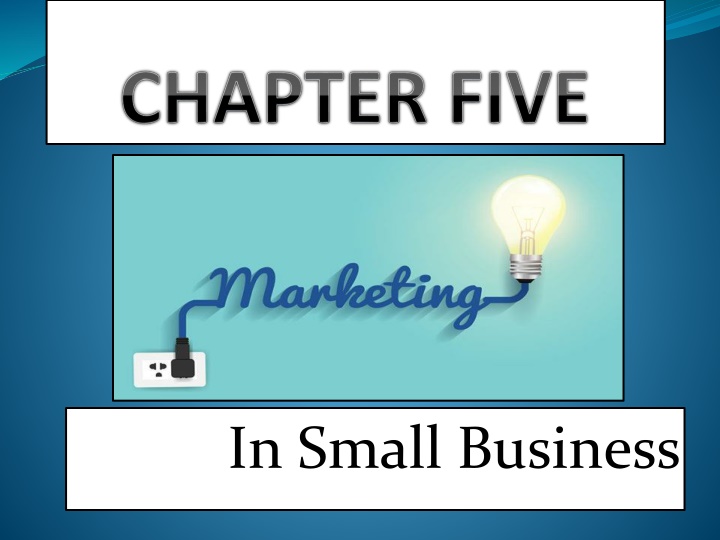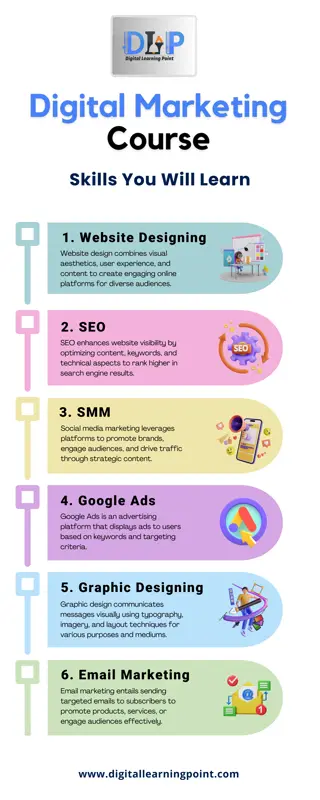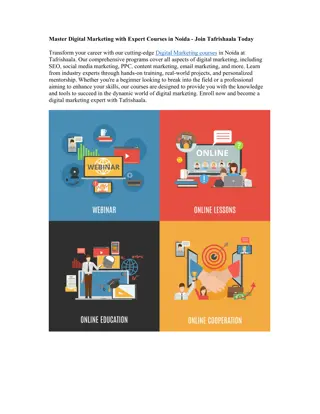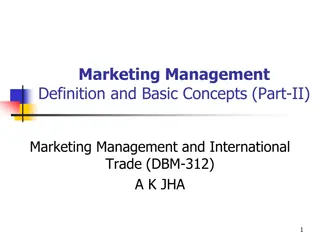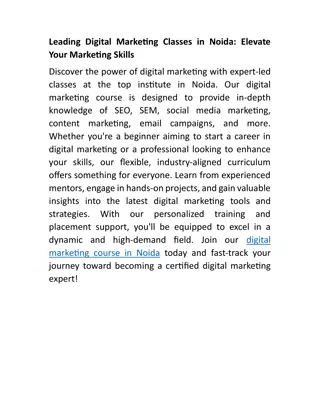Societal Process of Marketing
Marketing is a societal process facilitating the exchange of products and services. Stakeholder satisfaction is crucial for organizational success, requiring a balance between meeting stakeholder needs and maintaining profitability. The marketing mix elements encompass product offerings and pricing strategies essential for delivering value.
Download Presentation

Please find below an Image/Link to download the presentation.
The content on the website is provided AS IS for your information and personal use only. It may not be sold, licensed, or shared on other websites without obtaining consent from the author.If you encounter any issues during the download, it is possible that the publisher has removed the file from their server.
You are allowed to download the files provided on this website for personal or commercial use, subject to the condition that they are used lawfully. All files are the property of their respective owners.
The content on the website is provided AS IS for your information and personal use only. It may not be sold, licensed, or shared on other websites without obtaining consent from the author.
E N D
Presentation Transcript
Outline Definition of Marketing Marketing Mix Elements Market Segmentation Competitive Analysis Marketing Strategies International Marketing
5.1 An overview of Marketing Marketing is a societal process by which individuals or groups obtain what they need and want through creating, offering and freely exchanging products and services of valuewith other . Philip Khotler Marketing as knowing and understanding the customerso well that the product or service fits him and sells itself. Piter Druker Marketing communicating and delivering value to customers and for managing customer relationships in way that benefit the organization and its stakeholder. AMA is a set of processes for creating,
Marketing is the process of satisfying the organizations stakeholdersand creating value for these stake-holders. Stakeholders are persons or organizations that have a relationship with the organization. Every organization has a different set of stakeholders. The success of a company is determined to a large degree by how it manages and satisfies the relationship with its stakeholders.
Marketing is to deliver satisfaction and value to all of its stakeholders so concern and a responsibility for marketing is must. Therefore The firm must know : what itsstakeholderswant Anefficientwayof delivering satisfaction, How to do all these things without upsetting any one in its sphere. It is a balancing act. For example: the firm drop the price and make its customers happy, but shareholders unhappy, and employees are upset because they will not receive their annual bonus due to low profits.
5.2 The Marketing Mix Elements Product: is anything that can be offered to a market to satisfy a want or need. Products include physical goods, services, experiences, events, persons, places, properties, organizations, information, and ideas. It includes physical objects or services being sold, together with: packaging, image, warranty and, physical consumer s perceptions such as: colors, shapes, sizes and materials. brand name influence and attributes that
Price: is the monetary unit required for a purchase, and from an entrepreneur s view point, it is the unit of income ( it is the only element in the marketing mix that produces revenue) It is the amount of money charged for a product, It communicates information image and competition. about the products value, Promotion: is the act of communication that provides consumers with information about a company s products, its services or theventure itself. It includes: marketing, public relations. advertising, personal selling, direct
Distribution: is concerned with how products or services are made available to customers. Distribution can mean the physical channels or transporting products from manufacturers to end user. It includes agents, wholesalers, retailers and etc
5.3 Market Segmentation Market segmentation is breaking down a market into groups of customers with similar characteristics. The key for most small firms is to concentrate their efforts and resources on one or more closely defined market segments. Research studies show a relationship between profitability and firms that do this and thereby gain a high share of that market segment. Basis for segmentations are geographic, demographic, psychographic and behavioral.
5.4 Marketing Strategies for MSEs 5.4.1 Market Research in the Pre-Start-Up Phase Before entrepreneurs actually commit themselves to opening a business they have toanswerthe following: Who Is the Customer? A clear profile of potential customers is a basic element Customers may be young or old, married or single, teachers or students, homeowners or renters, poor or wealthy. of market research. This identification of the customers can be done through geographic, demographic, psychographic and behavioral. segmentation basis.
Where Is the Market? Part of the customer scenario will involve locating the potential customer base. This helps to get the advantage of location and making arrangements to make accessible/available forthe customers. Concerning thisactivity, italso helps to determine the market size and changes determine the potential forcurrentand futuresales, to identify local market characteristics that differ significantly because of population size, economic development, industrial profile, ethnic groups, weather, legislation and culture. the products easily
Who are the Market Players (Competitors)? Helps to identify both the existing competitors and potential that provide substitute products. When the firm studies the competitors, it identifies the weak side they have and their strong side.
5.4.2 Competitive Analysis: Research after Start Up A competitive analysis method of examining an organization or industry in order to provide a clear understanding of the factors that affect a business. is essentially a structured Michael Porter s (Competitive Strategy) five forces model of competition
The Threat of varies with the height of its entry and exit barriers. The most attractive segment is one in which entry barriers are high and exit barriers are low. Here few new firms can enter the industry, and poor performing firms can easily exit. When both entry and exit barriers are high, profit potential is high, but firms face more risk because poorer- performing firms stay in and fight itout. When both entry and exit barriers are low, firms easily enter and leave the industry and the returns are stable and low. The worst case is when entry barriers are low and exit barriers are high: Here firms enter during good times but find it hard to leaveduring bad times. Entry: A segment's attractiveness 1.
So, what is the threat of other companies entering the industry? Some points to be considered are: Capital requirements: requires a large critical entrepreneursare likely toenter the industry. Economies of scale: Due to mass scale production, the cost of production can be minimized, which benefits the firm. Distribution systems: Lacking established distribution systems or access to them is a major barrier to new entrants. Differentiation: extent to which an enterprise can establish a brand image, service, product innovation, or reputation describes its differentiation or distinct competency. If the capital investment, fewer type of business
2. The Power of Buyers: A segment is unattractive if buyers possess strong or growing bargaining power. Buyers' bargaining power grows when: they become more concentrated or organized, the company get significant profit from such buyers, the product is undifferentiated, when the buyers' switching costs are low, when buyers are price sensitive when buyers are relatively large and command a high percentage of the smaller company s sales, the buyers exercise negotiating power; entrepreneurs become price takers.
3. The Power of Suppliers: A segment is unattractive if the company's suppliers are able to raise prices or reduce quantity supplied. The fewer suppliers there are, and the more you need their help, the stronger their position and their ability to charge you more. Thatcan impactyourprofit. Supplierstend to be powerful when theyareconcentrated ororganized, when thereare fewsubstitutes, when the supplied product is an important input, when thecostsof switching suppliersare high, and when the supplierscan integratedownstream
4. The Threat of Substitutes: A segment is unattractive when there are actual or potential substitutes for the product. Substitutes place a limit on prices and on profits. If technology advances or competition increases in these substitute industries, prices and profits in the segment are likely to fall. A substitution that is easy and cheap to make can weaken your position and threaten your profitability.
5. Competitive Rivalry: A segment is unattractive if it already contains numerous, strong, or aggressive competitors. It is even more unattractive:- If market is stable or declining, If plant capacity additions are done in large increments, If fixed costs are high, If exit barriers are high, If competitors have high stakes in staying in the segment. These conditions will lead to frequent price wars, advertising battles, and new product introductions, and will make it expensive to compete. The extent to which an enterprise faces competitive rivalry is partially the result of a combined effort of the other four forces.
5.5 Marketing Strategies: A marketing strategy is a formulated plan that describes how a new venture will compete. It focuses on the competing in its market niche. subsequently providing guidelines for decisions allocation of resources, and responsibilities required to implementa marketing plan. enterprises activities related to about strategic objectives, Strategic Objectives: Entrepreneurs should be able to establish objectives thatcan beeasily measured.
Several types of objectives can be considered with similar measurable criteria this are:- Growth: is measured through sales activities and should be expressed in terms of sales or units sold. Profitability: In a business where prices and costs are sensitive, an entrepreneur will want to track return on sales to monitor the gap between income and expenses, and calculate a targeted rate of return on assets, equity and investments. Most companies can use these criteria to indicate how well they are utilizing assets togeneratesales.
Customer Service: define how the enterprise will serve customers, in terms diversification, or innovation. of product quality, Human Resources: Most excellent companies have this objectives such as helping employees to improve their career opportunities, or improving performance through job skill training.
General Approaches to Strategy: Small business business endeavor. Once established, a venture may be positioned to diversify into new products or markets. These strategies are called diversification. A vertical integration is a strategy of expanding backward into the vendor chain to secure resources, or of reaching forward into distribution intermediaries. must first establish the fundamental product or market channels to consolidate
The primary strategies for new ventures are shown below. Concentration: An intense growth can be achieved through market penetration tactics that include low prices, widespread advertising, and sales promotions. Growth can also be achieved by concentrating on a specific market with high-priced goods for select clients in up market locations. New market development: Another method of intense growth is todevelop several closely associated markets. New Product Development: A third alternative is product diversification which means to develop new products or services that are closely associated with existing product and services.
5.6 International Markets International marketing is the multinational process of planning and executing the conception, pricing, promotion, and distribution of ideas, goods, and services to create exchanges that satisfy individual and organizational objectives. International marketing is nothing but domestic marketing on a largerscale.
Domestic marketing involves one set of uncontrollable derived from the domestic market. International marketing is much more complex because a marketer faces two or more sets of uncontrollable variables originating from various countries. The marketer must cope with different cultural, legal, political, and monetary systems.
The Company is subject to the risks of doing business internationally, including:- Unexpected changes in regulatory requirements, fluctuations in foreign currency exchange rates, Imposition of tariffs restrictions, The burdens of complying with avarietyof foreign laws, General economic and geopolitical conditions, including inflation and trade relationships. and other barriers and
A firm s marketing mix determined within is by country s the uncontrollable environment as well as by the interaction between the sets. For optimum results, a firm s marketing mix may have to be modified to conform to a different environment, though wholesale modification is notoften necessary. factors each
